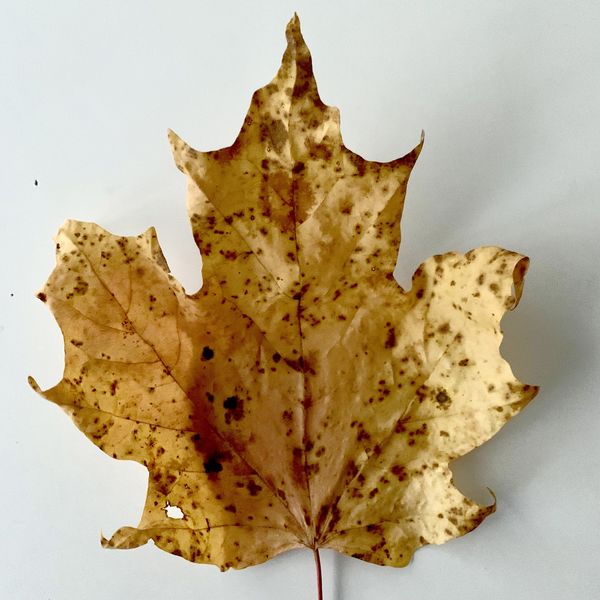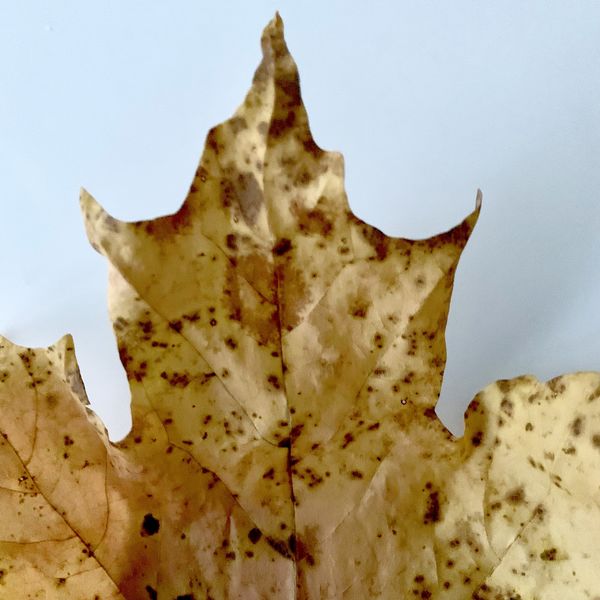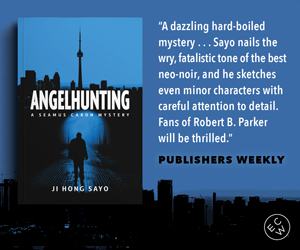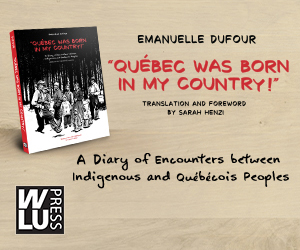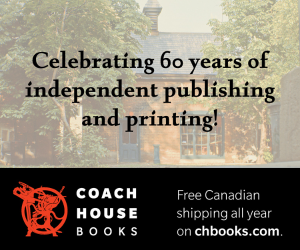The Writing Moment with... Spooky Season
By Daniel Scott Tysdal
I love and dread the fall.
The appeals are many: the crackling, fiery colours, the beginning of a new school year, Halloween’s ghoulish joys, the growing chill in the air, and the attendant comfort foods, sweets, and brews (yes, all those pumpkin-infused creations).
The drawbacks, for me, are fewer in number but more powerful in effect. Every September my mood drops, my energy plummets, and my handle on my mind and emotions weakens. I’ve experienced my worst mental health breakdowns in the autumn. When this season arrives, my memories of these experiences return, as does my fear another episode will arise and overwhelm me.
One thing that saves me is horror.
I’m sure this sounds counter-intuitive. But, over the last few years, I’ve found success dealing with my dread by, well, encouraging dread. I’ve managed what I fear by cherishing scares. I go all in on spooky season, exploring horror movies, reading, and writing, and enjoying Halloween costumes, decorations, and gear.
There are several reasons spooky selfcare works for me. There are the straightforward benefits, like the grounding routine, and there are the weirder, harder to explain supports, like the way horror can ease internal strife. There are also the benefits that overlap with writing and this column: the play with masks and roles, the encounter with the liminal, and the connection to a supportive and passionate community.
In the spirit of this practice, then, this incarnation of The Writing Moment will draw inspiration from spooky season. Though these prompts can aid you in your own horror creations, they are not horror writing specific. Instead, as with previous columns, these prompts aim to inspire you no matter your genre or whether you write fiction, CNF, poetry, drama, or spells.
This post is written in support of SKETCH Working Arts with the payment donated to assist their incredible work. You can read more about SKETCH here: https://www.sketch.ca
What follows below are a few writing moments prompted by spooky season to possess you with a scribbling spirit:
1) The Leaf Speaks: While I was out for a walk to gather my thoughts for this column, this leaf plummeted from its tree and smacked me right in the face like it was an extreme close talker or coming in for a kiss:
Your CanLit News
Subscribe to Open Book’s newsletter to get local book events, literary content, writing tips, and more in your inbox
The leaf’s expressive “face” (I’m getting Mr. Bill meets the Grinch vibes), and the urgency with which it struck me, signalled that I needed to include the leaf in this column.
Here are three prompts to get the writing crypt cracked open:
- Imagine the leaf speaks. What does it say?
- What other shapes, entities, figures, and forms do you see in this leaf? What shapes, entities, figures, and forms does the leaf see in you?
- Go for your own outside adventure: what strikes and speaks to you?
2) Persona’s Many Masks: The persona is our most Halloween-friendly writing tool. The etymological root of the word is “mask” and, when we write through a persona, we wear this mask, inhabiting the mind, bones, and flesh of a specific real or fictional person (or type of person).
Here are three prompts to get you wearing (and casting aside) the persona’s many masks:
- Wear the mask of your favourite monster. Writing from this monster’s perspective, give them the opportunity to explain why, in fact, they are not a monster, or why monsters are misunderstood. Remember, the art and fun of persona writing is drawing on our subject’s language and logic, their memories, hopes, and sensory and figurative horizons.
- Reveal the monster in the supposedly good, just, and honourable person. This can be an overt revelling in this mask’s hidden monsterhood or, following the tradition of the dramatic monologue, an example of a persona unwittingly revealing their status as monster as they celebrate their own good.
- Mask the mask. Try your hand at a double persona. For example, you could write from the perspective of the Speaking Leaf wearing the mask of me, Daniel Scott Tysdal. (This is in no way an unwitting admission that Daniel has been offed and replaced by the leaf.)
3) Our Many Masks: Halloween is the season of masks and costumes. It is a time of joyful play in disguise and transformation. It is also a time that amplifies this feature of our daily and lifelong experience of donning masks and costumes, of playing roles, meeting dress codes, and wearing uniforms.
Here are three prompts through which to explore masks and costumes through our own experience or the experience of your characters and voices:
- Did you have a favourite Halloween costume growing up? A most despised? Were these costumes connected to a memorable Halloween? Or maybe you’ve never celebrated Halloween: is there a costume you wish you could’ve worn? Explore your memories of these experiences or answer these questions from the perspective of one of your characters or voices.
- Explore the same memories or imaginings from the perspective of the costumes and masks. How did they witness these experiences? What was their life before meeting with you or your character/voice? What was their life after?
- Defining “mask” and “costume” as broadly as possible, make a list of the masks and costumes you have worn, have longed to wear, and have refused to wear in your lifetime. Begin a piece about the mask/costume (or combination of masks/costumes) that most provoke you. You can also undertake this prompt from the perspective of your characters or voices.
4) The Shedding Trees: My experience with the leaf has spurred me to create a prompt from another odd encounter I recently experienced in the woods.
Last week, while hiking in Forêt-la-Blanche, I heard a strange whispering sound, a chattering crossed with a sigh. I ventured off the trail into the brush to investigate. The sound grew louder and louder until I emerged in what I initially thought was a clearing, but I soon realized was a marvel I had not known was possible. The source of the sound was the leaves shushing and shaking in the air above me. Like all the others, these leaves had turned. What distinguished them, and what accounted for their odd sound, was that their trees had flaked away—bark, branches, trunks, and all. The leaves remained hovering red, orange, and golden in the air without support, sighing, chattering, whispering, calling me closer.
- Enter this clearing and encounter this sound. What happens next?
- Write about your own (real or invented) experience of a strange transition or a transformation gone awry. You can also undertake this prompt from the perspective of one of your characters or voices.
5) Creating with Carving: Another creative joy of this season is pumpkin carving. Pumpkin carving is a fun way to bond with family and friends, a variously fertile and clunky way to express ourselves, and a unique means of getting to know our neighbours (whether it be through a hyper-detailed pumpkin portrait of Alex Trebek or the lack of a jack-o’-lantern flaming in the window).
Here are three prompts to get you creating with pumpkin carving:
- Explore your characters and voices through their pumpkin carving creations. Having our characters or voices create works of art is a productive way to externalize the internal (emotion and motivation), to reveal character, and to add a unique dimension to their pursuit of their want or to their transformation journey.
- Add an element of conflict to the situation by exploring two characters or voices at the same time. The catch? There’s only one pumpkin and two very different visions.
- Challenging our characters or voices to improvise and get imaginative adds originality to our work and rewards our readers. In this situation, your characters are all set to carve pumpkins, only to discover they have no pumpkins. What do they carve instead?
6) It’s Alive!: To expand our creative boundaries and challenge ourselves, we can channel our inner-Dr. Frankenstein and create our own “monsters.” One way to accomplish this is to draw on existing works to compose a found mashup text:
- Extracting snippets from at least five different textual sources, create a new stand-alone work.
- Your sources may connect to a shared subject, or they may be completely unrelated. For the most “monstrous” result, I recommend you draw on five very different types of source text. If you are looking to randomize, you can ask friends to serve as your Igors who provide you with your textual parts.
- You can also undertake this process to expand or explore an existing project, character, or voice. For example, what works would two different characters create drawing from the same source texts? Or how would the same character’s creation change at different points in their journey?
7) Monster Mash(Up): As this Frankenstein prompt suggests, we can mash-up any given creature, fiend, and phantom with our writing practice to generate exercises and new work.
Here are a few examples along with a prompt to imagine your own:
- Werewolf Transforlation: Translate a passage or poem (your own or another writer’s) as though the speaker were a lycanthrope and the full moon is rising.
- Ghost Composing: Write a new piece that is haunted by an existing work of literature (again, your own or another writer’s).
- Fog Log: Imagine the surrounding sensory world is not real and material but is a kind of fog. How do you see and move through it? What does it hide?
- Kaiju Clomposing: Amplify to gigantic size an item, entity, emotion, or idea in a piece of writing. How are the surrounding characters and world destroyed? How do they survive? How do they fight back?
- Create your own Monster Mashup writing prompt, whether an abominable snowball poem, mummified monologue, vampiric voiceover, or zombie sonnet.
I hope you’ve enjoyed the fourth instalment of “The Writing Moment with . . .”.
In this series of craft-focused columns, I explore a wide range of works, topics, and interests that inspire me with the hope of inspiring you. I discuss what moves me in these different creations and practices, highlighting the spurs, lessons, and reminders that can serve as prompts and openings into creative possibility.
I call this column “The Writing Moment” because of the helpful double meaning of moment. Each of these individual prompts should only take a moment, and, I hope, each will inspire you to “have a moment,” sparking a burst of creative exploration—even on the busiest, or most reluctant, day.
You can read the first three instalments here.
Stay tuned for more next month!
The views expressed by Open Book columnists are those held by the authors and do not necessarily reflect the views of Open Book.
Daniel Scott Tysdal is the ReLit Award-winning author of three books of poetry, the poetry textbook The Writing Moment: A Practical Guide to Creating Poems, and the TEDx talk, “Everything You Need to Write a Poem (and How It Can Save a Life).” His short films have screened at festivals in Canada, the US, Mexico, and Australia, and his debut short story collection, Wave Forms and Doom Scrolls, is forthcoming from Wolsak & Wynn. He teaches at the University of Toronto Scarborough.

